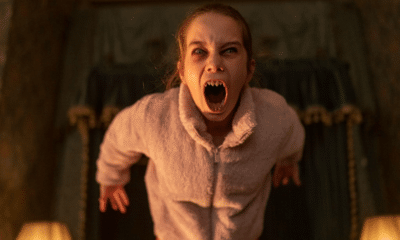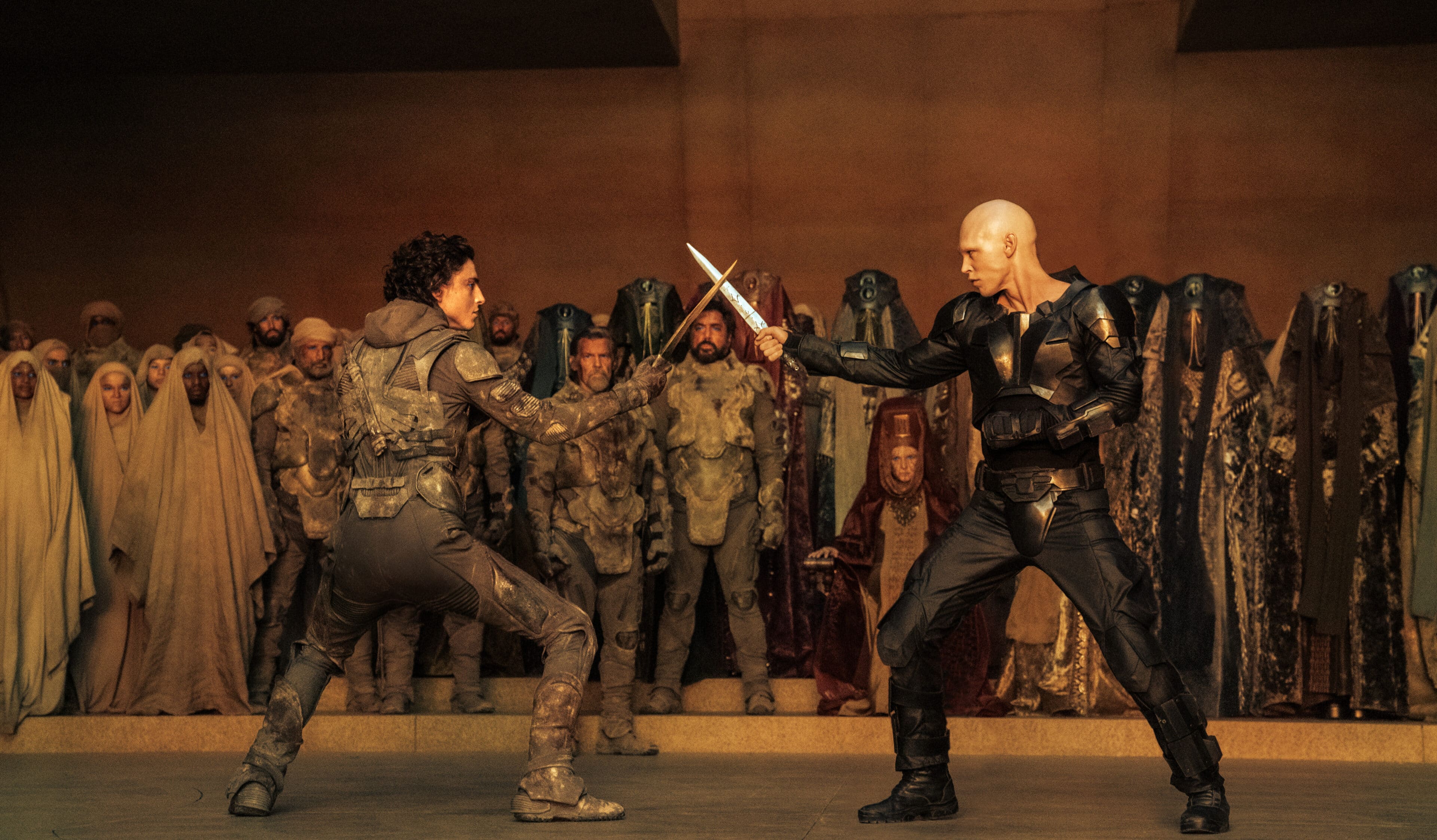With Gangnam Style destroying the charts the world over, we will soon see a second wave of the Korean invasion taking place. Three of South Koreas most commercially successful and critically acclaimed directors have their English language debuts set for next year. Kim Jee Woon (THE LAST STAND), Park Chan Wook (STOKER), and Bong Joon Ho (SNOWPIERCER) have already proved themselves in their homeland, and here at THN we are taking a look back over their past efforts. Starting with the films of Kim Jee Woon, join us each week over the course of the next few months as we explore The Land Of The Morning Calm.
Director: Kim Jee Woon
Year: 2003
Cast: Lim Su Yeong, Moon Guen Young, Kim Kap Su, Yum Jung Ah,
Plot: Two sisters, one of whom has just returned from a psychiatric institution, try living with their father and stepmother. But the house seems to be haunted.
A TALE OF OF TWO SISTERS is one of the most revered horror films of the last decade, and is certainly Kim Jee Woon’s most widely known film. Based on a traditional Korean folktale, it details the story of a pair of sisters coming to terms with their father’s new wife after their mother committed suicide. It’s a simple enough tale that Kim has extended into a dramatic and visionary work of art. The film went on to spawn a remake THE UNINVITED (2009), which although not terrible, seemed to completely avoid the unique atmosphere Kim created. I should also note, that in order to fully express my feelings towards this film, there are going to be some spoilers.
A TALE OF TWO SISTERS is a film that I just didn’t get at first. It technologically perfect, but there was something missing during my first viewing. I think the main problem for me was that I had overdosed on Japanese horror films at the time. RINGU, THE GRUDGE, KAIRO, DARK WATER, were just a few of my DVDs making regular stops in my player. As a way of breaking away from Japanese horror, I had immersed myself in the Korean New Wave, and had been impressed by just about everything I had seen. Upon approaching A TALE OF TWO SISTERS, I originally shrugged it off as something I had seen plenty of time before. But that’s because I was viewing it as a horror film, when really, it can be seen as so much more. Like watching THE EXORCIST as a drama, or PSYCHO as a psychological Oedipal thriller, A TALE OF TWO SISTERS gives you more on repeated viewings thanks to its expansive themes and intelligently handed emotions.
The opening credits take place over beautiful floral wallpaper that seems to come alive as the petals blow across the screen. The pattern and design is the first hint at what we will later encounter in terms of art direction. It seems important to introduce such visuals at a very early stage as we are then shoved into a sparse and colourless setting. Inside a psychiatric hospital is where the film begins, with all the colours and shades you’re used to. We’re soon travelling along in a car, on the inside looking out, as colourful scenes pass us by and a beautiful piece of music is played on a guitar. The music is one way in which Kim brings new life to the genre. He very rarely uses the music to enhance what is happening on screen. Instead, he uses it to capture the emotions characters are feeling. Acoustic guitar solos, piano solos, really compliment the isolated sisters who should be a pair.
The sisters’ bond is also shown visually through a very subtle use of colours and framing. Their first appearance together sees them step out of a car. Soo Mi (Lim) steps out first, wearin a red cardigan, whereas Soo Yeon (Moon) follows wearing a red skirt. For a brief moment the two almost aline, one behind the other, creating a whole. A very important visual technique as we later find out that Soo Yeon is simply part of Soo Mi’s personality. This kind of rich visual tapestry is prevalent throughout the film, and is so subtle that it comes as no surprise that the film really does grow on the viewer with multiple viewings.
We are soon introduced to Eun Joo (Yum) the “evil” stepmother. She is the perfect recreation of classic fairytale villainesses. She has bewitched the father and moved in to take the deceased mother’s place. She was once the simple nurse that took care of the mentally ill mother, and so the marriage has clearly given her a huge social boost. Soo Mi suspects that she is the cause for the disintegration of her parents’ marriage and her mother’s eventual suicide. At this point in the film it is clear that Kim is going against the social norms of Korean society, most likely to address particular issues but also create a sense of fear and abnormality. The European decor of the house certainly sets it apart from many apartment-set Korean films. It also allows for many more spooky nooks and crannies to explore.
The film deals a lot with mental health, especially in the closing minutes. Speaking to The New York Times in 2011 Dr. Kim Hyong Soo said “Talking openly about emotional problems is still taboo. If someone goes to a psychoanalyst, they know they’ll be stigmatized for the rest of their life. So they don’t go.” Many Koreans still prefer to visit fortune tellers that can be found in shopping centres, cinemas, and supermarkets. Soo Mi may have been released from a psychological institution, and the film may focus on horror and terrifying visuals, but it does use these and represent them as Soo Mi’s coping mechanism. By the end of the film she realises what she has been doing and so the ‘therapy’ she has undergone is a success.
The first moment of obvious horror transpires about quarter of the way through. It’s an image that’s familiar from countless Asian horror films, as a long haired woman with face obscured, crawls along the floor. At first Kim takes his time, using nothing but digetic sound, most notably Soo Mi’s erratic breathing. However, Kim then experiments with quick cuts, and the sound of distortion from a radio. It’s a complete assault on the senses. The film doesn’t use this as a cue to go off the rails though, and it remains deliberately paced throughout. The impending sense of horror is one that has a delicious psychological payoff, but unlike other horror films where we hammered repeatedly in order to remind us to be scared, A TALE OF TWO SISTERS always shows how tragic these events truly are.
The harrowing finale is a jump back in time and a look at how we really need to think about our actions and not let blind rage control us. It’s to Lim’s credit that, having portrayed the strong and observant young woman throughout, she is able to crumble psychologically without seeming weak. In the last few moments we are also shown her darker and less understanding side, but even then we feel pity due to what we know is going to happen. The entire film is a treat thanks to the range of performances that often begin as folktale tropes, before evolving into something far more fascinating.
A TALE OF TWO SISTERS shows Kim exploring quite a strict genre, and he conforms in such a way that it was deceptive the first time I watched. Repeated viewings show that, whereas before and after he broke conventions with broad comedy or sudden violence, A TALE OF TWO SISTERS is all about tackling serious issues through heavily disguised subtext. It would make just as fascinating viewing if we were shown the true events from the outset, but disguising it as a horror also allowed this to become a commercial smash. A TALE OF TWO SISTERS feels complete, both as a narrative, and cinematically. The actors are perfect, Kim’s handling of themes and genre ranging from remorse, acceptance, mental illness, forgiveness, and fear is something to behold as he peels back the layers. A wonderful achievement.
What To Take To THE LAST STAND? The absolute confidence displayed here won’t go amiss. It will be interesting to see if Kim inserts the artistic subtleties or goes all out with the comedy action. Hopefully they’ll be some areas to analyse without forgetting THE LAST STAND will no doubt be an enjoyable blockbuster.
THE LAST STAND is released on 18th January 2013 in the US and 25th January 2013 in the UK. It stars Arnold Schwarzenegger, Johnny Knoxville, Rodrigo Santoro, Jaimie Alexander, Forest Whitaker, Peter Stormare, Luis Guzman, and Genesis Rodriguez.
Join us next week for a look at another Kim Jee Woon classic. You can find all the articles in the series here.
Luke likes many things, films and penguins being among them. He's loved films since the age of 9, when STARGATE and BATMAN FOREVER changed the landscape of modern cinema as we know it. His love of film extends to all aspects of his life, with trips abroad being planned around film locations and only buying products featured in Will Smith movies. His favourite films include SEVEN SAMURAI, PASSION OF JOAN OF ARC, IN BRUGES, LONE STAR, GODZILLA, and a thousand others.

1 Comment
Leave a Reply
Leave a Reply
Latest Posts
-


Film Trailers
/ 24 hours agoM. Night Shyamalan’s ‘Trap’ trailer lands
Anew experience in the world of M. Night Shyamalan.
By Paul Heath -


Film News
/ 2 days agoFirst ‘Transformers One’ teaser trailer debuts IN SPACE!
The animated feature film is heading to cinemas this September.
By Paul Heath -


Film Reviews
/ 2 days ago‘Abigail’ review: Dirs. Matt Bettinelli-Olpin & Tyler Gillett (2024)
Matt Bettinelli-Olpin and Tyler Gillett direct this new horror/ heist hybrid.
By Awais Irfan -


Film Trailers
/ 2 days agoNew trailer for J.K. Simmons-led ‘You Can’t Run Forever’
A trailer has dropped for You Can’t Run Forever, a new thriller led by...
By Paul Heath


















how to earn money online sinhala
Sep 21, 2015 at 11:14 pm
Make easy cash online by searching on google make $50 daily http://www.makemoneyonline.mx